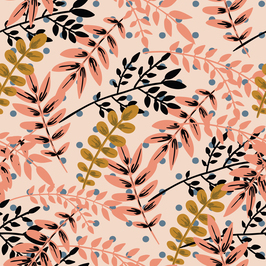The repeat pattern is a replica or model of the object which to be created. It is used to make a hollow cavity in the sand mold in which molten metal is poured and allow solidifying to create an object. repeat patterns in art and design is the repetition of lines, shapes, tones, colors, textures, and forms. Artists and designers explore trends to discover their decorative elegance, to understand their fundamental structure, and to communicate their intrinsic beauty. Knowledge of how to design repeat patterns is an essential skill for any designer. Today, repeat patterns are almost widely used everywhere. They are used in tiling, wallpaper, textiles, and packaging.
In December 1881, William Morris, who was the most excellent pattern designer of the arts and crafts movement, delivered a lecture on some hints on pattern designing, at the working men’s college in London. He described the excellent decorative pattern as “ something that will not drive us into unrest or callousness; something which reminds us of life beyond itself and which has the impress of imagination keen on it; and something which can be done by a great many people and without too much difficulty and with pleasure.
Craftsman Talent:

Most modern patterns design is done on computers for speed and accuracy, but historically it was a craftsman-like skill that identified some of the greatest artisans of their day. Repeat patterns are beautiful. Low cost and easy to cast. Easy to repair. It should light in weight, which makes it easy to handle. It should able to stand ramming forces without deformation. It should do not change its dimensions in the presence of moisture. It should be easily removable from the mold. It should have a long life without a change in its aspects.
Types of repeat patterns:
According to the shape and size of casting and method of making cavity, the pattern can be classified as follow:
Single piece pattern: It is the simplest type of design that is made in a single piece. Simple piece pattern used in objects. It is either placed into cope or in drag according to the simplicity of operation. It is used to cast a stuffing box of steam engines. The split pattern on multi-piece pattern: These patterns are made into two or more pieces. The first half of the model placed into a cope and another half into drag. It is used for complex objects where removal of single piece pattern from the mold is impossible. When the design is made in more than three parts, cheeks are also used for easy removal.
Cope and drag pattern: In cope and drag pattern, there are two pieces of the split model, as discussed above. It is used for large objects.
Match plate pattern: Match plate pattern is a split pattern in which the cope and drag section mounted on opposite sides of a plate. The plate is known as a match plate. These will make it easy to cast and shape with a high production rate. Skeleton pattern: these patterns used for large pure castings. In these patterns, skeleton-like structures made by using simple pattern sections. These will be both time and material.

